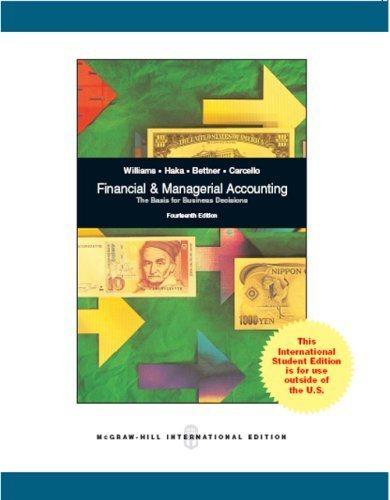Queen Enterprises is a furniture wholesaler. Queen hired a new accounting clerk on January 1 of the
Question:
Queen Enterprises is a furniture wholesaler. Queen hired a new accounting clerk on January 1 of the current year. The new clerk does not understand accrual accounting and recorded the transactions below based on when cash receipts and disbursements changed hands rather than when the transaction occurred. Queen uses a perpetual inventory system, and its accounting policy calls for inventory purchases to be recorded net of any discounts offered.
Jan. 7 Paid Hardwoods Forever Inc. $4,900 for furniture that it received on December 20.
(This purchase was recorded as a debit to Inventory and a credit to Accounts Payable on December 20 of last year, but the accounting clerk ignores that fact.)
Dec. 23 Received furniture from Koos Hoffwan Co. for $10,000; terms 2/10, n/30.
Dec. 26 Sold furniture to Beige Chipmunk Inc. for $15,000; terms 1/10, n/30. The cost of the furniture to Queen was $12,250.
Instructions
a. As a result of the accounting clerk’s errors, compute the amount by which the following accounts are overstated or understated:
1. Accounts Receivable
2. Inventory
3. Accounts Payable
4. Sales
5. Cost of Goods Sold
b. Compute the amount by which net income is overstated or understated.
c. Prepare a single journal entry to correct the errors that the accounting clerk has made. (Assume that Queen has yet to close its books for the current year.)
d. Assume that Queen has already closed its books for the current year. Make a single journal entry to correct the errors that the accounting clerk has made.
e. Assume that the ending inventory balance is correctly stated based on adjustments resulting from a physical inventory count. (Cost of Goods Sold was debited or credited based on the inventory adjustment.) Assume that Queen has already closed its books for the current year, and make a single journal entry to correct the errors that the accounting clerk has made.
The ending inventory is the amount of inventory that a business is required to present on its balance sheet. It can be calculated using the ending inventory formula Ending Inventory Formula =... Accounts Payable
Accounts payable (AP) are bills to be paid as part of the normal course of business.This is a standard accounting term, one of the most common liabilities, which normally appears in the balance sheet listing of liabilities. Businesses receive...
Step by Step Answer:

Financial And Managerial Accounting
ISBN: 12
14th International Edition
Authors: Jan R. Williams, Joseph V. Carcello, Mark S. Bettner, Sue Haka, Susan F. Haka





